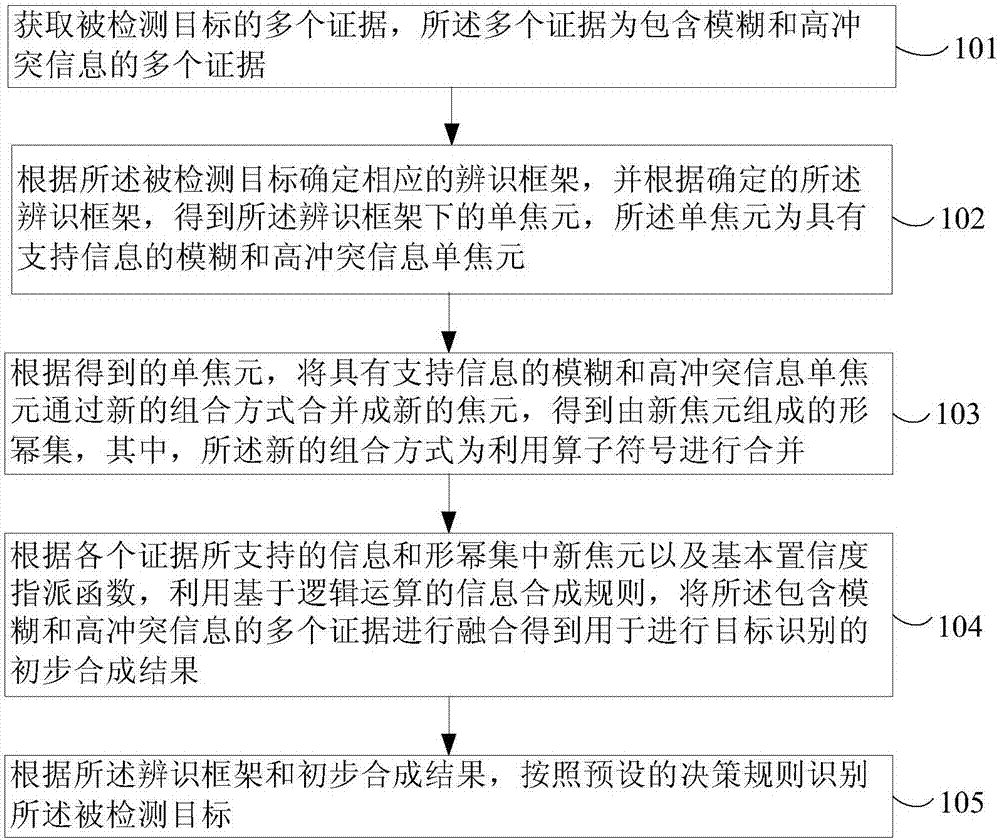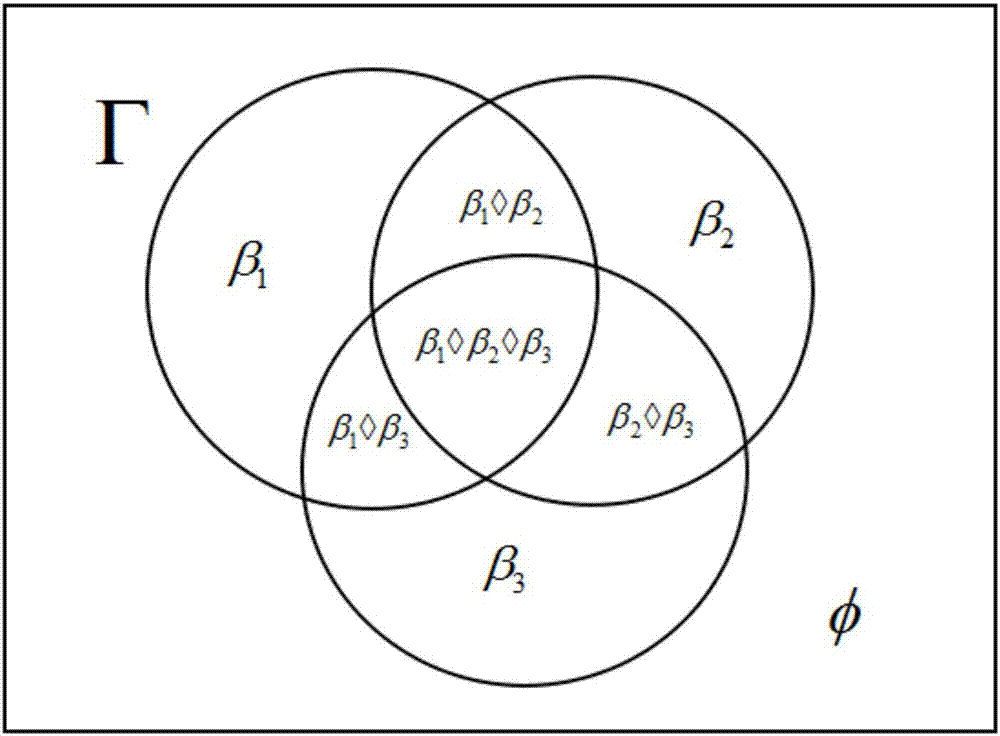Target identification method used for processing fuzzy and high conflict information
A target recognition and fuzzy technology, applied in the target recognition field dealing with fuzzy and high conflict information, can solve the problems of inability to resolve conflicting information, inaccurate target detection, high ambiguity of information, etc. The effect of avoiding the possibility
- Summary
- Abstract
- Description
- Claims
- Application Information
AI Technical Summary
Problems solved by technology
Method used
Image
Examples
Embodiment 1
[0052] Such as figure 1 As shown, the target recognition method for processing fuzzy and high-conflict information provided by the embodiment of the present invention includes:
[0053] S101. Obtain multiple evidences of the detected target, where the multiple evidences are multiple evidences containing fuzzy and highly conflicting information;
[0054] S102. Determine a corresponding recognition frame according to the detected target, and obtain a single focal unit under the recognition frame according to the determined recognition frame, and the single focal unit is a fuzzy and high-conflict information unit with supporting information Jiao Yuan;
[0055] S103, according to the obtained single focal unit, merge the fuzzy and high-conflict information single focal unit with supporting information into a new focal unit through a new combination method, and obtain a shape power set composed of the new focal unit, wherein the new The combination method is to use the operator s...
Embodiment 2
[0105] This embodiment also provides a target recognition system for processing fuzzy and high-conflict information. The system is used to implement the target recognition method for processing fuzzy and high-conflict information described in the embodiment of the present invention. The system includes: A target detection node, a target information collection node, an information processing node, and a discrimination node; the target detection node, the target information collection node, an information processing node, and a discrimination node are all sensor nodes in a wireless sensor network; the target detection node, the target The information collection nodes can be the same sensor nodes or different sensor nodes.
[0106] The workflow of the system can include:
[0107] Track the moving target through the target detection node. If the detected target appears, notify each sensor node in the target information collection node to start collecting the target information of ...
Embodiment 3
[0110] In order to better understand the target recognition method for processing fuzzy and high-conflict information described in this embodiment of the present invention, combined with specific examples, the target recognition method for processing fuzzy and high-conflict information described in this embodiment and The system is described in detail:
[0111] Such as image 3 As shown, the current application scenario is the field of vehicle recognition in the traffic system. Some magnetic sensor nodes and image sensor nodes are deployed on both sides of the road respectively. These nodes can be divided into clusters at intervals, and each group contains magnetic sensor nodes and image sensor nodes. These magnetic sensor nodes and image sensor nodes can communicate with each other and are inexpensive to form a heterogeneous sensor network; Among them, the magnetic sensor nodes can act as target detection nodes to detect the presence of the detected target, and after detect...
PUM
 Login to View More
Login to View More Abstract
Description
Claims
Application Information
 Login to View More
Login to View More - R&D
- Intellectual Property
- Life Sciences
- Materials
- Tech Scout
- Unparalleled Data Quality
- Higher Quality Content
- 60% Fewer Hallucinations
Browse by: Latest US Patents, China's latest patents, Technical Efficacy Thesaurus, Application Domain, Technology Topic, Popular Technical Reports.
© 2025 PatSnap. All rights reserved.Legal|Privacy policy|Modern Slavery Act Transparency Statement|Sitemap|About US| Contact US: help@patsnap.com



